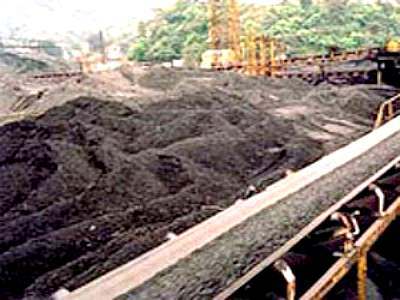
| Exploring 210-billion-tonne coal basin: big potential, high risk | |
The Vietnam Coal and Mineral Group’s (Vinacomin) scheme to develop the Red River Delta coal basin has attracted the attention of the public for its huge potential and high risk. According to Vinacomin, Vietnam’s need for coal by 2010 will be 25-26 million tonnes. With a total output of 45-47 million tonnes, Vietnam will be able to export 20 million tonnes next year. However, the country will have to reduce coal exports to 5 million tonnes in 2012. This is the reason for Vinacomin’s request to open the Red River Delta coal basin. However, scientists are worried about the feasibility of this project, its environmental impacts, economic effectiveness and food security.
Why does Vinacomin want to open the Red River Delta coal basin at this moment?
According to Vinacomin, Vietnam’s requirement for coal will hit 94 million tonnes by 2015. Coal-fuelled power plants alone will use up to 67 million tonnes of coal while the total coal output will be around 60 million tonnes only.
By 2020, the country’s need for coal will reach 184 million tonnes, with 150 tonnes for power plants, while the total output of coal will be 70 million tonnes. In 2020, the demand for coal will rocket to 308 million tonnes, with around 268 million tonnes for power plants. Vietnam will have to import coal.
According to Vinacomin, Vietnam has to think about purchasing coal right now. However, its negotiations with coal exporters have not been successful because sellers have offered coal at high prices. The group suggested boosting the exploitation of coal at home, especially of coal mines which have not been exploited yet, for example in the Red River Delta.
Vinacomin said that the Red River Delta contains a huge quantity of coal which could help the country balance the supply-demand of coal after 2020. It estimates that this coal basin has up to 210 billion tonnes of coal, with some kinds of coal suitable for power and metallurgic plants.
Vinacomin designed a scheme called “Developing the Red River coal basin” in June 2009 and the Ministry of Industry and Trade has sent this scheme to relevant ministries and bodies for comment.
Huge potential, high risk
The shortage of coal is the motivation for exploring new coal basins like the Red River Delta. However, this project requires careful research because this coal basin covers a vast area, where millions of people live and where there are millions of hectares of agricultural land and important construction works.
Vinacomin has begun its surveys of the Red River Delta coal basin. However, the survey is still in the first stages because this group has foreseen big difficulties. The coal basin is deep beneath the ground and covers a large area, around 3500sq.km in Nam Dinh, Hung Yen and Thai Binh provinces.
Vinacomin plans to survey some mines, such as Binh Minh, Khoai Chau 1 and Khoai Chau 2, which are at the depth of 400 to 1200m.
The investment for exploration is estimated at 6.5 trillion dong (US$382.3 million) and the total capital for this scheme is up to 76.36 trillion ($4.49 billion). Vinacomin is seeking foreign investors to explore this potential basin together.
The group has signed business cooperation contracts (BBC) with Australia’s Linc Energy and Japan’s Marubeni Corporation to experimentally use gasifying technology at a coal mine in the Red River Delta.
The Red River Energy Company has also inked a deal with China’s Machinery Import Export Corporation (CMC) to explore the Khoai Chau – Binh Minh coal mines before establishing a joint venture to explore the Binh Minh mine by the traditional pit method.
Initial criticism
Vinacomin has received some comments from the Ministry of Construction (MoC). This ministry asked Vinacomin to more carefully consider the following issues: the Red River Delta coal basin development scheme must not break down the construction and urban planning, not harm rice land and coal mining technology must not affect the land ground of the region where coal is mined.
The MoC also said that Vinacomin has to calculate the impacts of the global climate change phenomenon.
The Union of Vietnam Scientific and Technological Associations said that Vinacomin’s scheme still lacks an environmental evaluation report.
These are initial responses but they show how important Vinacomin’s scheme is. The group will have to do more research to compile a detailed scheme. This scheme needs to be submitted to the National Assembly for consideration of the investment policy, economic, social and environmental impacts. The entire political system and public need to agree on this project, not like in the case of the bauxite mining programme. | |
| VNN |
